Why Ammonia
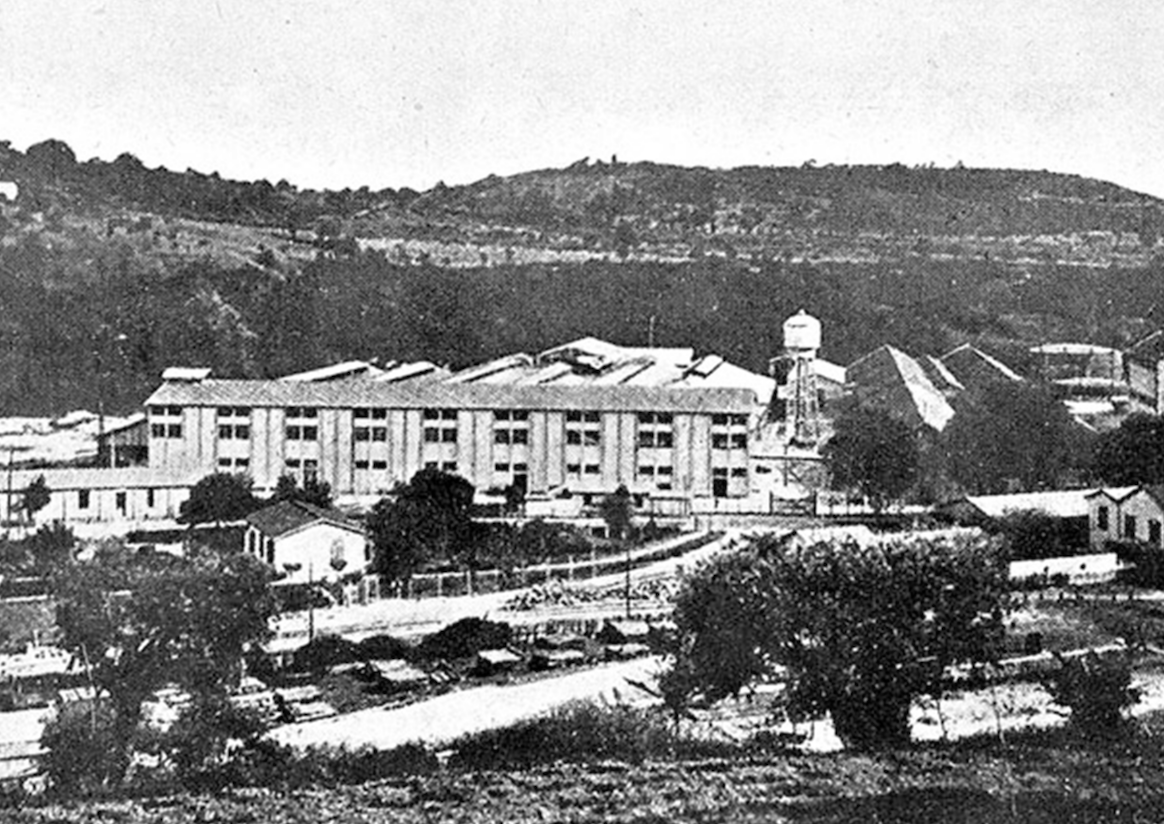
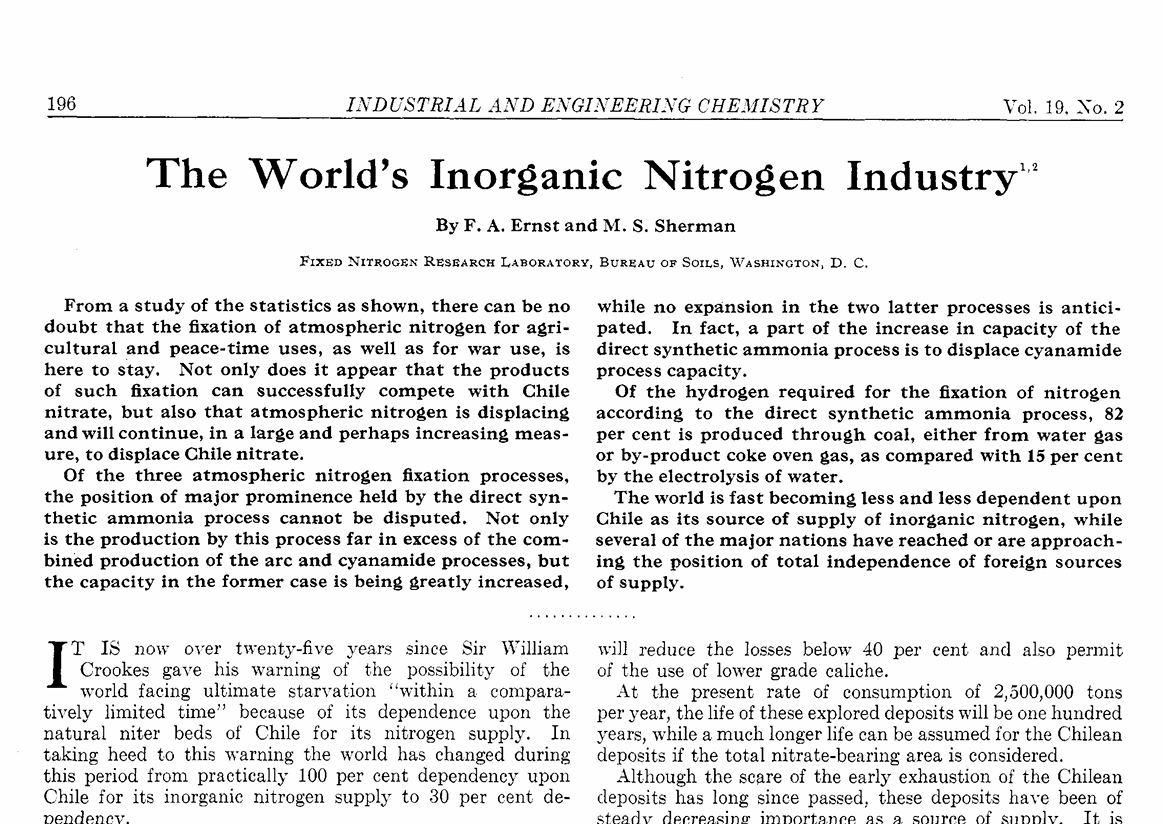
100 Years of International Trade
Ammonia has been transported across the world for over 100 years as a primary ingredient in fertilizer.
In the early 1900s, population growth made food shortages seem inevitable. It was only the discovery of synthetic ammonia production that allowed humanity to escape these food shortages.
Today, ammonia as fertilizer supports over half of the world’s population.
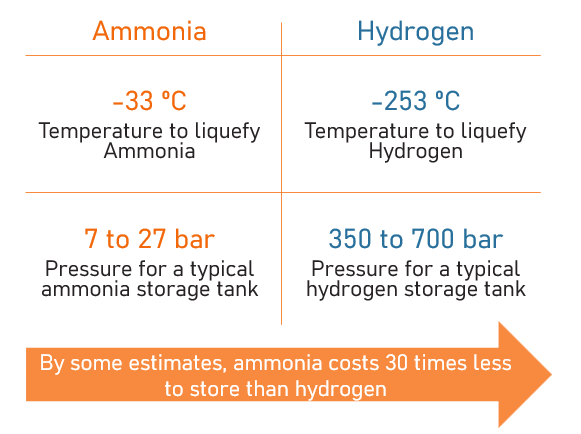
Ammonia Provides Flexibility
To mitigate uncertainty and the changing needs of heavy industry, and to accommodate fluctuations in energy demand, easily transportable molecules are required.
Hydrogen is the smallest molecule, invisible and corrosive. It is difficult to store and handle. Moving hydrogen around is expensive.
Ammonia is a larger molecule. Its handling is more straightforward. The ease of storing and transporting ammonia adds valuable flexibility to the future energy system.

Building on a Strong Foundation
The existing international trade of ammonia creates a clear network for introducing ammonia as a fuel. Introducing ammonia into existing networks is valuable given the established infrastructure and expertise already present.
Ammonia’s Rise in the Maritime Sector
Targeting ammonia infrastructure along high traffic routes makes it easier to introduce ammonia as a shipping fuel. For example, Singapore is the international leader in the bunkering of new shipping fuels. Given that Singapore is already responsible for roughly 22% of the world’s fuel bunkering as measured on an energy content basis, simply the adoption of ammonia as a fuel in Singapore has a huge impact on fuel availability.
Main Maritime Shipping Traffic Routes
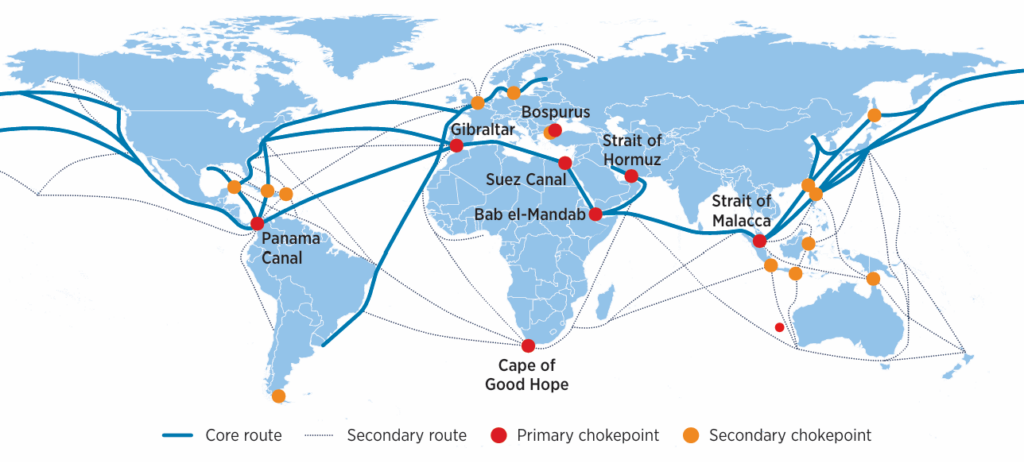
Source: IRENA (2021), “A pathway to decarbonise the shipping sector by 2050,” International Renewable Energy Agency, Abu Dhabi., pg. 37
International Shipping Bunkering, 2017 (TJ/Year)
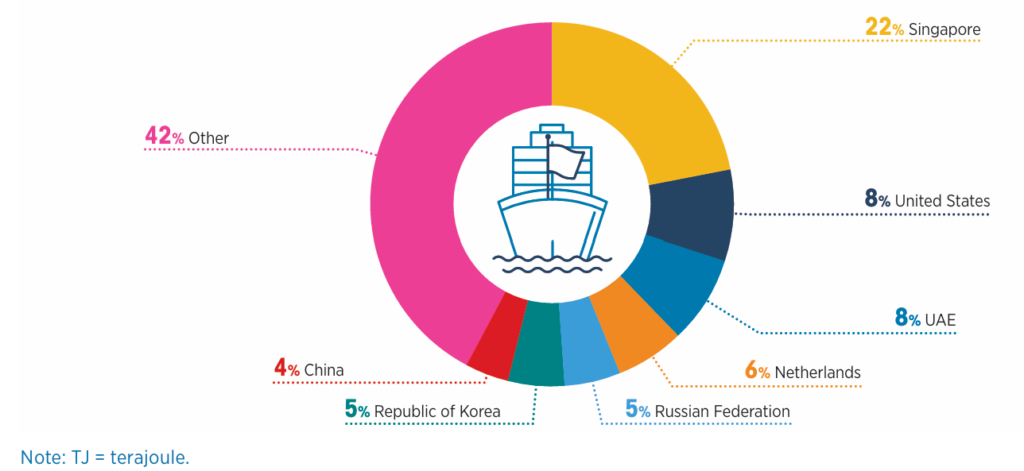
Source: IRENA (2021), “A pathway to decarbonise the shipping sector by 2050,” International Renewable Energy Agency, Abu Dhabi., pg. 39

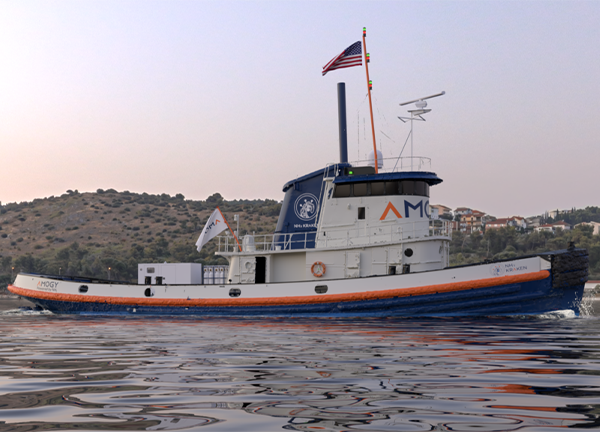
Ammonia’s Use as a Maritime Fuel has already Begun
In March 2024, the Maritime and Port Authority of Singapore worked together with Fortescue to conduct ammonia fuel trials. The ship, the “Green Pioneer,” was successfully powered by ammonia fuel.
Along with the Maritime Port Authority of Singapore, the Global Centre for Maritime Decarbonization under the leadership of Prof. Lynn Loo and many others are working hard to advance ammonia’s use as a maritime fuel with a variety of safety and refueling pilots.
Back in the United States, U.S. technology company Amogy finished retrofitting a tugboat to run on an ammonia fuel cell. It completed its maiden voyage in the New York Hudson River in September 2024.
The International Maritime Organization (IMO) is making progress toward amending the rules to allow the use of ammonia as a fuel. At the IMO’s Maritime Safety Committee meeting in December 2024, the use of ammonia cargo as fuel in an ammonia carrier was allowed for the first time; the amendment will enter into force in July 2026.
Ammonia for Power Generation is On the Horizon
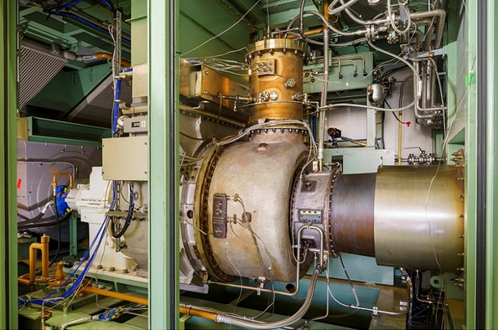
Advancing Gas Turbine Technology for 100% Ammonia Fuel
Countries reliant on coal and natural gas today see ammonia as a pathway to bring reliability and stability to the grid during hours of the day when renewables are not available.
Technology to use ammonia in high-efficiency gas turbines is therefore under development.
IHI and GE Vernova are working together to commercialize gas turbines that run on 100% ammonia by 2026. The research is using a 2,000 kW-class gas turbine which, in June 2022, for the first time ran on 100% ammonia.
Mitsubishi Power is meanwhile developing an ammonia-powered, 40 MW Class Gas Turbine System for commercialization in 2025.
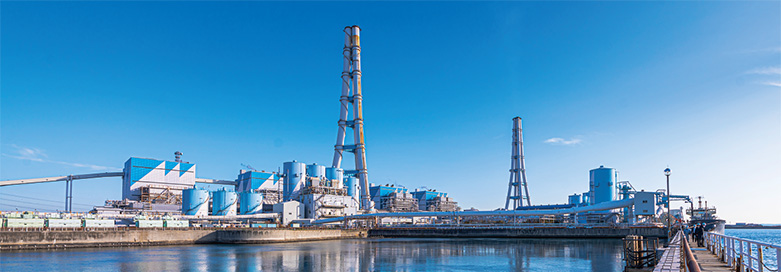
Scaling Ammonia Power: Fueling Cleaner Coal Plants
Ammonia can also be used today to reduce the emissions from existing thermal plants that run on coal. This has been demonstrated in Japan at the Hekinan Thermal Power Station. Emissions at the plant are reduced in proportion to the amount of coal replaced with ammonia. Ammonia ensures that existing assets can still be used as long as they are needed, while reducing emissions.

